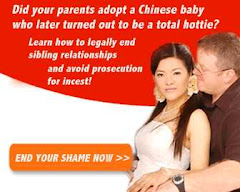I get that it means that here in the Republic of Korea this means even more advanced wireless networks and better data transmission, but beyond that, I'm at a loss. It's like when I have to read soccer-related stories about how this team or that team is likely to do well in the World Cup: my eyes glaze over even as my brain processes each individual word.
At any rate, judging from the first sentence, I gather this is something positive. If anyone would like to explain it to me like I'm a four-year-old (a four-year-old medical sociologist), feel free to run loose in the comments section.
South Korea has moved even further ahead of the rest of the world when it comes to mobile data transmission and wireless networks. While everyone else is still scrambling to get effective 3G networks in place, Korea has become the first country to have a working commercial 3G+ HSDPA (High Speed Data Packet Access) network. SK Telecom has rolled out the network in 25 cities across the country. They hope to sign up 300,000 subscribers to the new service by the end of the year.Got it? Korea going to 3G+ HSDPA in twenty-five cities...300,000 subscribers by the end of the year...14.4 Mbps maxium, with that as a target by 2008...phones to be released soon...
HSDPA offers a maximum downlink speed of 14.4 Mbps, though it will not perform at that rate to begin with. The speed targets include 3.6Mbps in early 2007, 7.2Mbps by sometime later in 2007, and the full 14.4Mbps in 2008. SK Telecom has currently announced one phone, the Samsung W200, which will provide downlink speeds of 1.8Mbps. They will release four or five more HSDPA phones by the end of the year, starting with an LG offering in June.
Okay, my brain is full now. Time for Minesweeper on the PDA.

The consumer in me is going, "Wow, that's three sexy models." The medical sociologist in me is thinking, "Gee, she'd better have someone take a look at that mole." Preferably me. Sphere: Related Content






















i asked my friend who is an engineer and designs the 3g systems. apparently 3g doesn't mean anything. its a generic term, and the hsdpa is just the data connection. it's basically just an operating 3g network,which isn't new. although korea has been labeling its phones 3g for a long time they weren't really. they were only 2.5g, and for 3g they needed to switch from a cdma to a gsm based system. i think this article is just a nice piece of publicity/propaganda put out by one of the telecommunications companies and happily printed by the media.
ReplyDeletehere is a link from australia, which is by no means on the cutting edge of broadband data transfer, basically because of the really low population density, which makes it too expensive. (yes it's even lower than canada) and australia has had the 3g system since 2000 and the same data rate as korea is planning for next year. the affordability and subsequent uptake of the technology is a whole other issue though.
ReplyDeletehttp://australianit.news.com.au/articles/0,7204,18966220%5E24169%5E%5Enbv%5E,00.html
Groupe Spécial Mobile, thanks for developing this fancy-dancy technology. Like Qualcomm's stickers we'll just remove yours from the handsets so there'll be no confusion that this is indeed Korean technology.
ReplyDeleteHurrah for us!!!
Best regards,
Your pals at the Ministry of Communication's R&D team.
Actually, Cingular (of all companies..) deployed this technology first, but I digress.
ReplyDeleteThe GOOD news in this is that Korea will finally be using a wireless standard that is compatible with the rest of the planet. When Cingular sells 3G phones, you will be able to take them and use them in Seoul. No more rent-a-phones or buying a bloody phone just for Seoul. Yay!